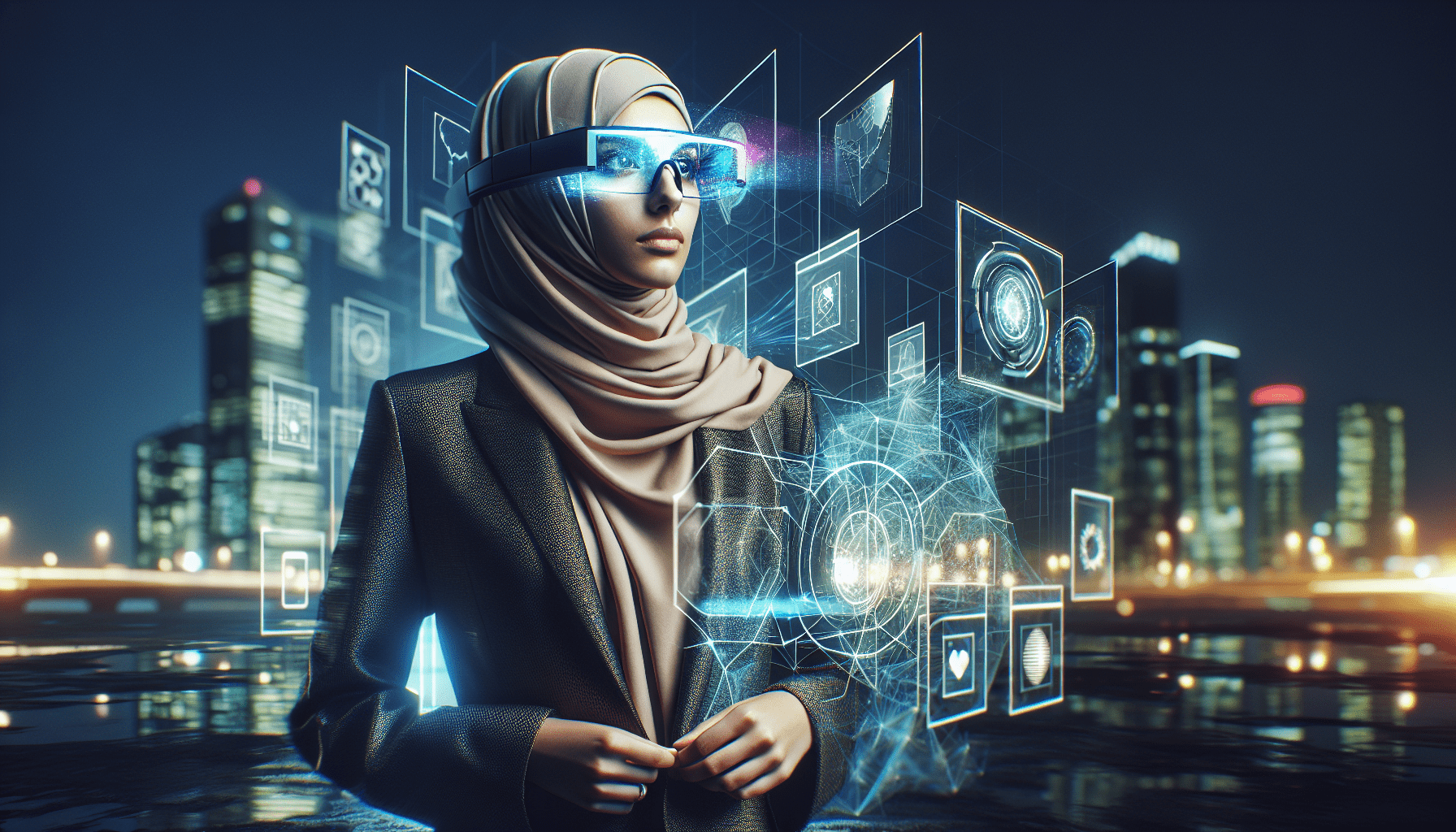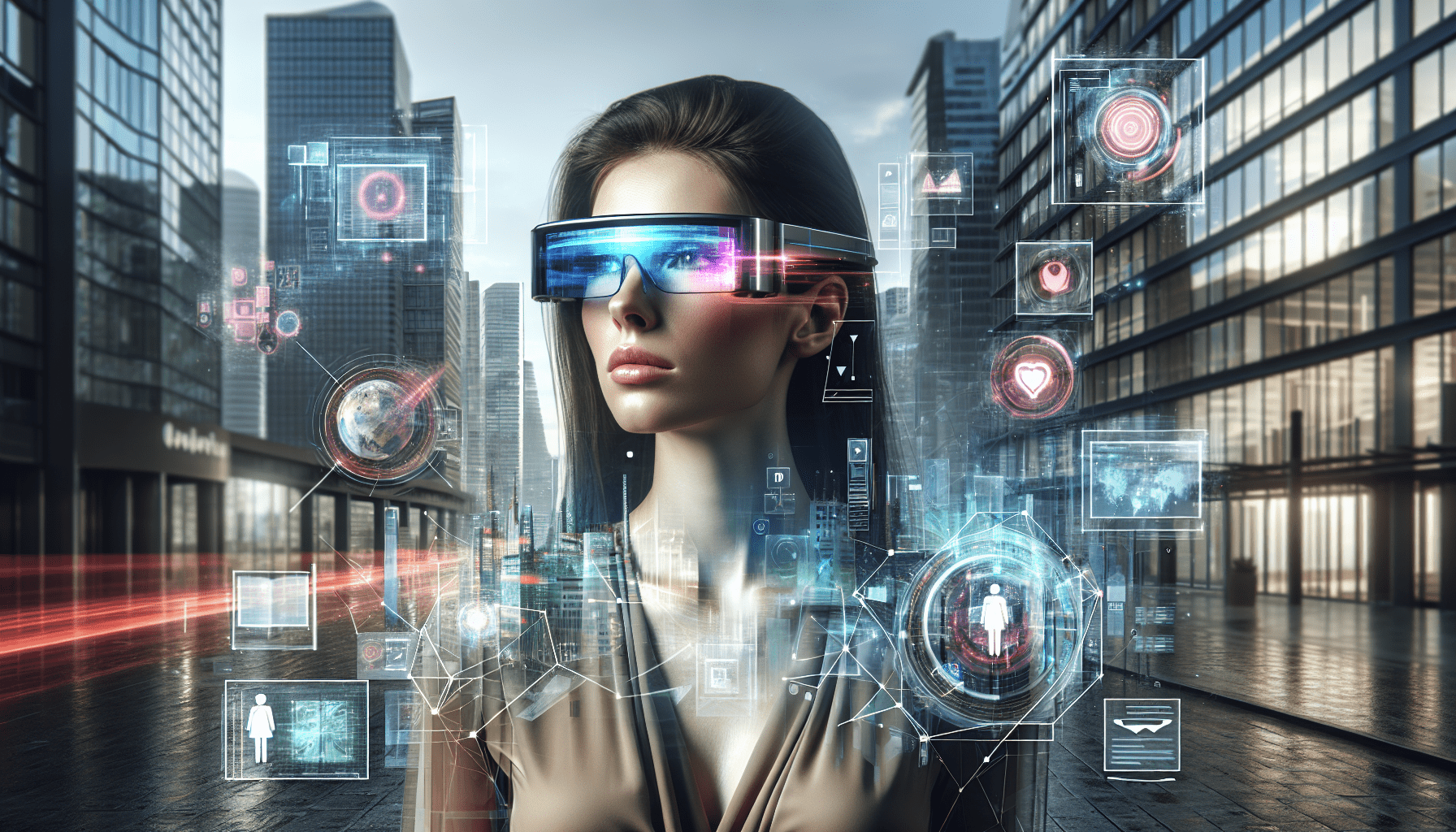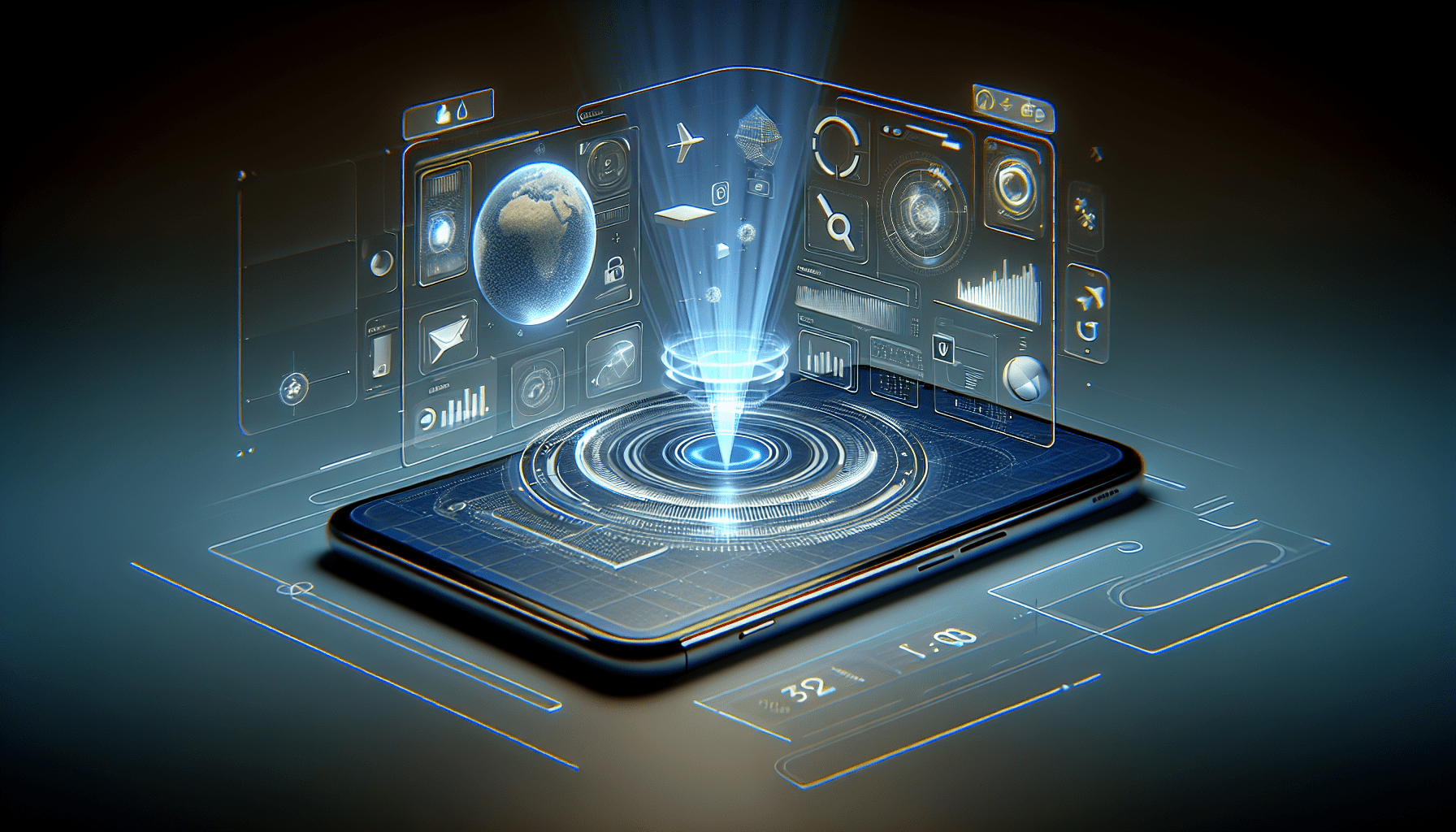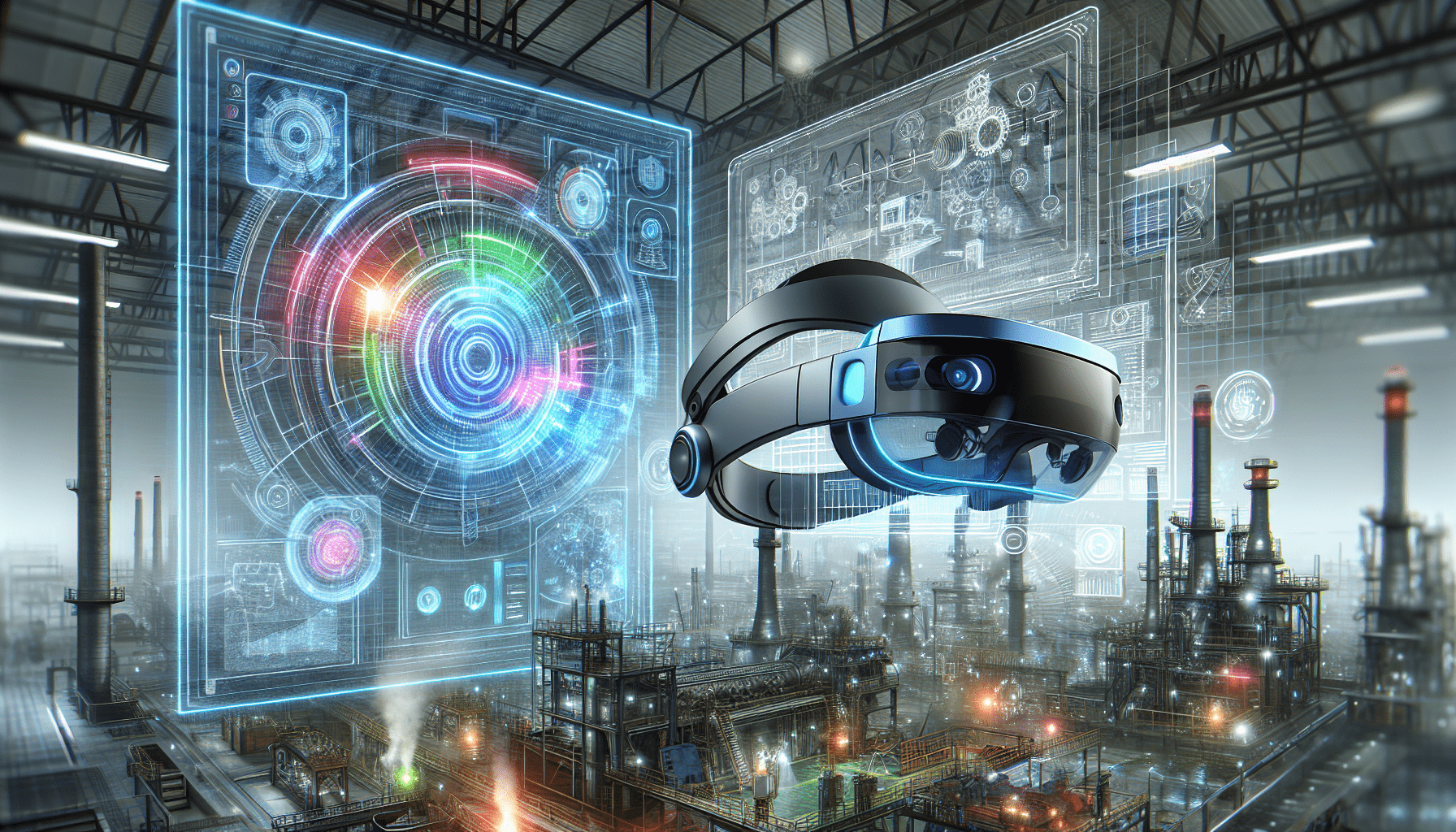The Magic of Augmented Reality: What It Is and How It’s Used” unravels the fascinating world of augmented reality (AR) and its transformative impact on numerous industries. By blending the digital and physical realms, AR enhances your everyday experiences, from shopping to training and entertainment. You’ll discover how AR is being used to bring textbooks to life, provide immersive training simulations, and create interactive retail experiences. Dive into this article to explore the captivating possibilities of AR and understand its growing role in reshaping our interaction with the world. Have you ever wondered what it would be like to see the world through a digital lens, where everything you see is enhanced with real-time information and vibrant virtual elements? Welcome to the world of Augmented Reality (AR)!

$30 off $400+ Anycubic Products with code AC30OFF
The Magic of Augmented Reality: What It Is and How It’s Used
Augmented Reality (AR) might seem like a concept lifted straight out of a sci-fi movie, but it’s very real and it’s here to stay. AR enriches your immediate environment by embedding digital details into your view of the real world. Unlike Virtual Reality (VR), which creates a completely separate digital environment, AR overlays computer-generated images, sounds, or other data on top of what you see in the real world. Exciting, right?
What Exactly is Augmented Reality?
To put it simply, AR is an interactive experience that combines our real-world environment with digital information, creating an enriched, integrated scene. This phenomenon is typically facilitated by either hardware (like smartphones and AR glasses) or software applications. Imagine looking at your living room through your smartphone and seeing a virtual cat lounging on your real sofa. That’s Augmented Reality in action.
How Does Augmented Reality Work?
AR works by using a range of technologies to superimpose data onto the real world. Here’s a breakdown of the main components:
- Sensors and Cameras: These capture what is happening in the real world. They help in recognizing surroundings and engage directly with physical objects.
- Processing: Advanced processors help in interpreting sensor data. They use algorithms to place the digital content in appropriate places.
- Projection: This helps in displaying the combined image of the real and virtual worlds.
- Reflection: AR devices often use mirrors to assist human eyes in viewing digital images and data.
Types of Augmented Reality
AR can be categorized into different types, each offering a unique way to experience the blend of the real and virtual worlds:
- Marker-Based AR: Uses specific visual cues known as markers (like QR codes) which trigger the augmentation when scanned using an AR device.
- Markerless AR: Relies on position data like GPS to identify your location and superimpose virtual objects accordingly.
- Projection-Based AR: Projects light onto surfaces to create interactive environments.
- Superimposition-Based AR: Replaces the view of an object with an augmented view.
How Augmented Reality is Used
AR is finding applications across diverse fields, revolutionizing how we interact with our world and opening up a universe of new possibilities. Let’s explore some of its uses:
Education: Bringing Lessons to Life
Wouldn’t it be amazing if you could conjure a 3D model of the solar system right before your eyes during a science lesson? Education is one of the most promising areas where AR is making a significant impact. By creating interactive and immersive environments, AR can transform traditional learning into an engaging experience. Historical events, scientific concepts, and even complex mathematical problems can be brought to life, making learning more intuitive and fun.
Healthcare: Enhancing Diagnostics and Treatment
Imagine a surgeon viewing real-time 3D models of a patient’s organs during an operation. AR in healthcare is not just a vision of the future; it’s happening now. From enhancing diagnostic tools to assisting in surgical procedures, AR is helping healthcare professionals be more precise and efficient. Medical students can take advantage of realistic, interactive simulations to better understand human anatomy and surgical techniques.
Gaming and Entertainment: Stepping into New Worlds
When it comes to gaming and entertainment, AR has been transformative. The global phenomenon Pokemon Go is a prime example of how AR can turn the real world into a virtual playground. By blending digital elements with physical surroundings, AR games create immersive experiences that are hard to ignore. And it’s not just limited to gaming; AR is also making waves in movie promotions and theater productions.
Retail: Enhancing Shopping Experiences
Ever wished you could try on clothes without stepping into a fitting room, or see how furniture would look in your home before buying it? AR is redefining retail experiences. Customers can use AR to visualize products in their own environment, making more informed purchase decisions. Virtual fitting rooms, 3D product views, and interactive store navigation are just some of the ways AR is enhancing the way we shop.
Real Estate: Visualizing Spaces
House hunting can be stressful, but AR is here to transform the way we tour properties. Imagine being able to see a furnished version of an empty apartment or visualize different design themes in real-time. Real estate agents can offer virtual tours, allowing potential buyers to explore properties in detail without physically visiting them.
Military: Training and Strategy
The military has been an early adopter of AR technology, using it for training and strategic planning. Simulated combat scenarios, navigation overlays, and real-time data visualization enhance the situational awareness and readiness of soldiers. This technology helps in reducing risks and improving outcomes during military operations.
Everyday Life: Making Mundane Tasks Exciting
From navigation and translation apps to interactive visual instructions and social media filters, AR has made its way into our daily routines. Remember the time you used a Snapchat filter? That’s AR in a simple, fun form. Whether you’re figuring out how to piece together furniture or want to see how a new hair color would look, AR can be a game-changer.
AR in Marketing: Engaging Customers
Marketers are always looking for innovative ways to engage customers, and AR provides just the right platform. By creating interactive experiences, brands can capture the audience’s attention more effectively. From virtual try-ons to interactive advertisements, AR campaigns are more memorable and can significantly boost brand loyalty and engagement.
Industry and Manufacturing: Improving Efficiency
In manufacturing, AR is being used to streamline operations. AR-powered glasses can provide workers with real-time information, guide them through complex procedures, or even assist in maintenance tasks. This not only boosts productivity but also reduces the risk of errors.
Buy Photon Mono M5 Get Free 1KG Resin
Advantages of Augmented Reality
AR isn’t just about adding flash to your real-world experience; it offers several practical benefits. Let’s break down some key advantages:
| Advantage | Description |
|---|---|
| Enhanced Learning | AR makes information more accessible and engaging, ideal for educational purposes. |
| Improved Healthcare | From surgical procedures to training, AR enables greater precision and efficiency. |
| Immersive Experiences | AR provides deeply engaging experiences in gaming, entertainment, and retail. |
| Better Decision Making | Visualizing real-world applications of products can lead to more informed decisions. |
| Cost-Effective | Virtual simulations and remote diagnostics can save money in various industries. |
| Increased Efficiency | AR tools in manufacturing and maintenance save time and reduce errors. |
Challenges and Limitations of Augmented Reality
Like any technology, AR comes with its own set of challenges and limitations. Awareness of these issues is the first step toward overcoming them:
Technical Limitations
- Battery Life: AR applications can be power-hungry, draining device batteries quickly.
- Processing Power: High-quality AR applications require robust processing, which isn’t always available on all devices.
- Calibration: Ensuring that digital elements align correctly with the physical environment can be tricky.
- Network Dependencies: Many AR applications rely on strong, constant internet connections for real-time updates.
Privacy Concerns
- Data Collection: AR applications often collect data to tailor user experiences, raising privacy concerns.
- Security Risks: Real-time data exchange can be susceptible to cyber threats, necessitating strong security measures.
Human Factors
- User Discomfort: Extended use of AR can cause eye strain or motion sickness in some users.
- Learning Curve: Users may need time to adapt to AR interfaces and functionalities.

The Future of Augmented Reality
The future of AR is bright and filled with possibilities. As technology advances, we can expect AR to become more seamless, integrated, and widely adopted across various spheres of life. Some potential future developments include:
Enhanced Wearable Tech
Advanced AR glasses or contact lenses might become commonplace, making the technology less intrusive and more intuitive. Imagine having a digital assistant always with you, navigating your day with ease.
Improved Interactivity
Future AR systems may offer more natural ways of interaction. Gesture recognition, voice commands, and even mind-controlled interfaces could revolutionize how we engage with digital content.
Widespread Adoption in Various Industries
As AR becomes more accessible and cost-effective, its adoption will likely spread to more industries. From agriculture to construction, AR can bring about significant improvements in efficiency and productivity.
Integration with AI
The integration of AR and Artificial Intelligence (AI) could pave the way for smarter, more intuitive applications. AI can help in better recognizing environments and predicting user needs, making AR experiences even more personalized and responsive.
Social and Ethical Considerations
As AR becomes more pervasive, it will also raise important social and ethical questions. Issues related to privacy, data security, and digital inclusion will need thoughtful consideration to ensure that AR benefits everyone equitably.
Conclusion
Augmented Reality is more than just a technological fad; it’s a transformative force set to change the way we perceive and interact with the world. From education and healthcare to retail and gaming, AR is making significant strides, making our experiences richer and more interactive. While there are challenges to overcome, the potential benefits far outweigh the limitations. As we move forward, integrating AR into our daily lives will open up new possibilities, making our world more interconnected and visually enriched. So, why not dive into the magic of Augmented Reality and see the world in a whole new light? After all, the future is virtually yours to explore!
$30 off $400+ Anycubic Products with code AC30OFF




